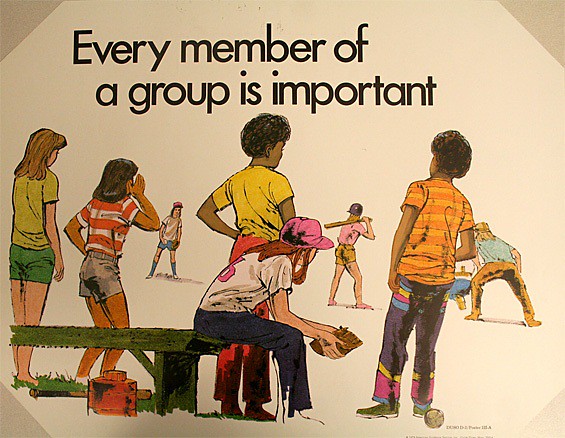|
|
|
|
|
|
It's an interesting debate, for me "hot rod" is very much an American term, whereas in the UK guys were building "specials".
Whereas the US guys retained far more original body steel work the UK would build more bespoke minimalist bodies on those pre war chassis. The aim was to go quicker with what you could readily lay your hands on.
I think feeding into the US themes were also "moonshine runners".. hopped up 30/40s steel, built to go fast when needed but not flash(that also became a building block to US stock cars which ultimately brought forth NASCAR) ...something that wasn't an influence in the UK.
|
| |
2014 - Audi A6 Avant 3.0Tdi Quattro
1958 - Chevrolet Apache Panel Truck
1959 - Plymouth Custom Suburban
1952 - Chevrolet 2dr Hardtop
1985 - Ford Econoline E350 Quadravan
2009 - Ovlov V70 2.5T
1970 - Cortina Mk2 Estate
2007 - Fiat Ducato LWB 120Multijet
2014 - Honda Civic 2.2 CTDi ES
|
|
|
|
braaap
Posted a lot
  
Posts: 2,751
Member is Online
|
|
|
|
|
I appologize for probably having (re-)opened a can of worms.
I spoke to my mate MichaElWoody lately, who pointed me to that hotrod-picture-thread he once had a dispute in because of some homemade hotrod pictures he criticized. This amongst other things made the start for his decision to leave. I surely have seen that thread before but since hotrods are not that interesting to me so far, have only scrolled through once.
I revisited it again now and have seen the plenty aspects of hot rodding: traditional, modern, hitech, more custom than rod, more racecar than rod, more kitcar than rod, whatever.
But like it was already shining through here, plenty people means plenty opinions.
Borders are fluid, interpretations are unlimited, quotations allowed, so there is probably not the definitive hot rod?
|
| |
|
|
|
|
|
Feb 24, 2023 19:20:25 GMT
|
|
The YouTube algorithm chucked this my way this evening, 'jalopy racing' came over here and developed into what we call stock car racing. Roof chopped old Fords just going in circles instead of between the lights on the main drag.
You don't need the sound on, I bet it sounded ace in real life.
|
| |
Last Edit: Feb 24, 2023 19:22:32 GMT by generallee
|
|
|
|
|
Feb 24, 2023 19:42:24 GMT
|
Hot rods then came about to confuse matters, hence the Starlet body kit thing that kicked all this off.  Which developed into space framed racing cars, still known as hot rods. 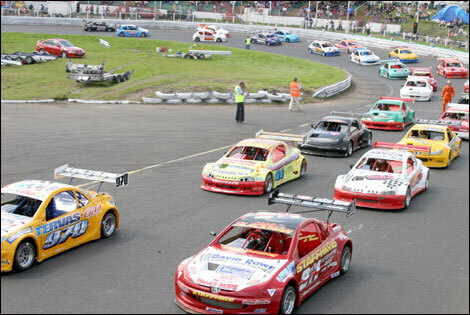 This is a really cool thread, loads of interesting points of view. Personally I would nonchalantly call something old a hotrod if it was about go before show, weight reduction before comfort etc. Maybe even a well-optioned 50s yank sedan if it had the hi-po "mill", 4 on the floor and no other options apart from radial tires and 'bucket' seats. It's strange isn't it, we get interested in the finer details, the average Joe Public points and says "ooh look a Noddy car. It's Brum!" And a little piece of all of us dies. |
| |
Last Edit: Feb 24, 2023 20:05:22 GMT by generallee
|
|
|
|
|
|
|
Something else about Trad Hot Rods and the UK that I think needs to be mentioned... The Ca. based Trad Hot Rod group (or club) The Shifters like to pretend they were solely responsible for bringing Trad Hot Rods back. They weren't... I've seen Trad Hot Rods at cars shows before we were subjected to all of their self promotion, and long before that I read about the UK based club The Low Flyers. Credit where credit is due... Myself, and a fellow East Coast Sidewinder went to Goodwood a couple of years ago. Invited along by old friends in the Low Flyers club. We were Faux flyers for the weekend…  Anyway exhibit A from my personal opinions… Left is a hotrod. Right is not. Yes it’s a classic T&A mix with a tyre rake and a tuned four banger but - Coupes are for chickens… 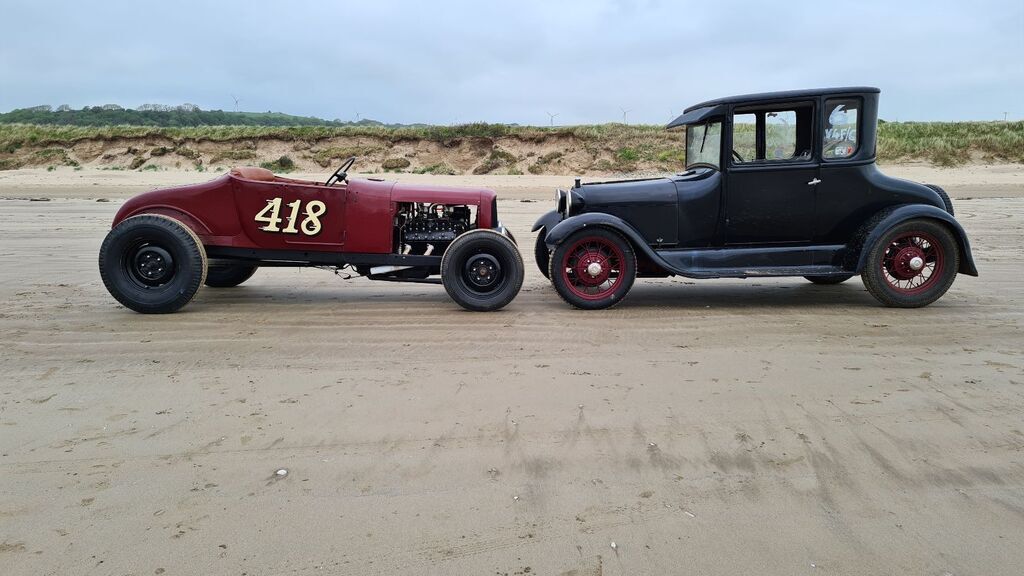 |
| |
Last Edit: Feb 26, 2023 7:26:06 GMT by hotrodfil
|
|
braaap
Posted a lot
  
Posts: 2,751
Member is Online
|
|
|
|
Left is a hotrod. Right is not. Yes it’s a classic T&A mix with a tyre rake and a tuned four banger but - Coupes are for chickens…   Coupes are for chickens! Or for grannies? I could well see grandma duck in that, althpough she drove a Detroit Electric IIRC?  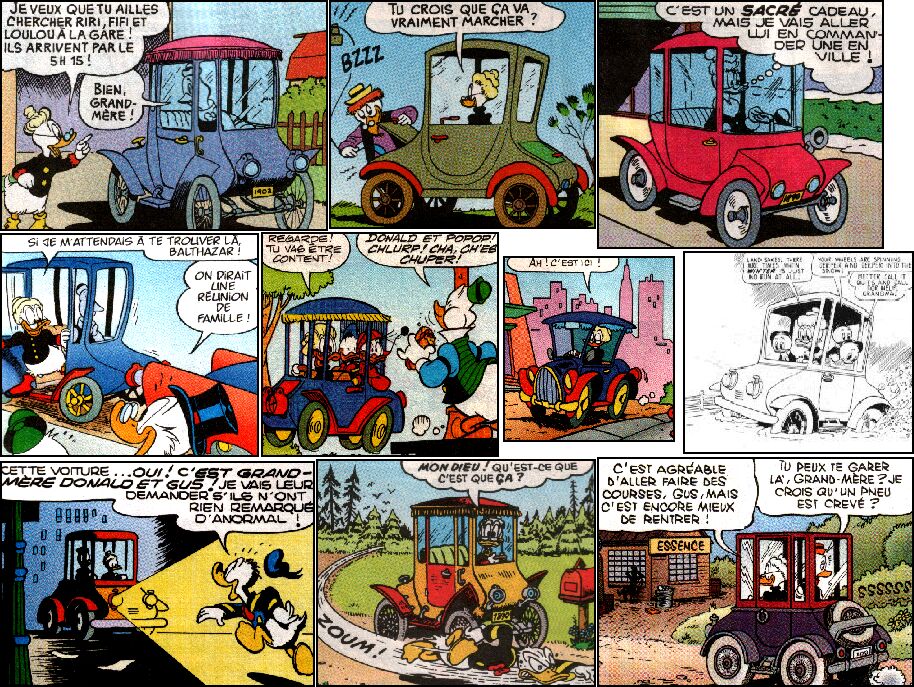 Anyway, thanks for the lesson. btw. the dude on the left in Your first pic, or better the way he wears his trousers. Blue jeans, rolled up, I saw that a lot already in old, contemporary pictures, so that would be part of the hot rod tradition, too? Not only amongst hot rodders, but also rockabillys, mods probably and other sub genres? I mean today there should be no problem to buy a properly fitting pair of trousers. Unless Your jeans come from Ukraine, Vlads stupid war makes me think, everything comes from there nowadays.  |
| |
|
|
braaap
Posted a lot
  
Posts: 2,751
Member is Online
|
|
|
|
|
Another term that confuses me, what devides a Kustom from a Custom?
|
| |
|
|
|
|
Dez
Club Retro Rides Member
And I won't sit down. And I won't shut up. And most of all I will not grow up.
Posts: 11,790
Club RR Member Number: 34
|
|
|
|
Another term that confuses me, what devides a Kustom from a Custom? George Barris gets quoted with the coining of that term, with little to no evidence as to where or why. It doesnt really mean anything different, and again at the time was a less used phrase- even ‘custom’ was less used, with more cars in the magazines of the time referred to as being ‘restyled’. I often wonder if ‘kustom’ came about as ‘custom’ was actually a trim level on fords from 1950, which persisted for many years (in fact I think it’s still used today) that would make sense to me anyways. The k would easily differentiate from an unmodified factory Ford. The only good thing about it is 70 years later it does make Googling stuff easier as it’s mostly only used for modified cars. |
| |
|
|
braaap
Posted a lot
  
Posts: 2,751
Member is Online
|
|
Feb 26, 2023 11:46:27 GMT
|
Thanks Dez! Currently all ford transporters are named transit, depending on the size with an additional name like courier, connect or ... custom. |
| |
Last Edit: Feb 26, 2023 11:47:30 GMT by braaap
|
|
|
|
|
|
|
Feb 26, 2023 13:04:05 GMT
|
Anyway, thanks for the lesson… Nah, just an opinion - but then it is my chicken Coupe… |
| |
|
|
voodoo57
Club Retro Rides Member
That's not 2 metres! come a little...Closer!
Posts: 2,869  Club RR Member Number: 137
Club RR Member Number: 137
|
|
Feb 26, 2023 14:37:58 GMT
|
|
(Taken from Rods n sods forum) same Q' was asked some time ago,
what is a 'trad hot rod? Or indeed a 'nostalgic' hot rod? Or just plain 'hot rod' I would say a nostalgic hot rod is one built with all the parts and styled on on era gone by. A traditional hot rod IMO is one made from whatever is readily available...
|
| |
|
|
voodoo57
Club Retro Rides Member
That's not 2 metres! come a little...Closer!
Posts: 2,869  Club RR Member Number: 137
Club RR Member Number: 137
|
|
Feb 26, 2023 14:40:14 GMT
|
|
In A Nutshell......
A lot has been written about the history of hot rods. But the origin of hot rods can be pointed to just before the end of World War II. In fact, the craze for custom cars began even further back, to before World War I. Customizing cars was much popular with the well-heeled in the U.S. and Europe.
The period between the end of the war in 1945 and the beginning of the 1950s saw a number of factors which came together, mainly in one place, southern California, which created a unique environment for the hot rod and its culture to be borne. In the hot rods history, the term “hot rods” seems to have first appeared in the late 1930s in southern California. People would love to race their modified cars on the vast, empty dry lake beds northeast of Los Angeles under the rules of the Southern California Timing Association. The activity rose in popularity after World War II.
The original hot rods were old cars, most often Fords, which were modified to reduce weight and improve aerodynamics. Some of the typical modifications were to strip off all nonessential part like convertible tops, hood, bumpers, windshields and lowering the chassis. The engine was modified by tuning and/or replacing with a more powerful type. These modifications were considered to improve the appearance as well, leading to car shows in the 1960s. Eventually coupes and sedans joined the ranks. But these heavier models underwent drastic surgery to chop their tops lower and slope their windshields backward.
History of hot rods shows how with the rising interest in the hot rods, “Speed contests” were occurring with greater frequency and more dire consequences. With more causalities occurring, Hot rods were branded as a social menace requiring greater control or, even elimination too. They ran unmonitored and multiple casualties were on the rise.
It was time someone took control of the situation. In 1937, the Southern California Timing Association was formed, which developed more sophisticated timing systems. This in turn helped a lot in making hot rodding safer and more organized. In 1941, a monthly publication called Throttle Magazine was designed with a purpose to track racing results, featuring some of the better cars, and also reporting on new safety and speed issues.
But in 1941, with the U.S. getting involved in World War II, hot rodding would have to wait. Hot rods history shows that at the end of the World War II, many small military airports throughout the country were either abandoned or rarely used. These airports allowed Hot Rodders across the country to race on marked courses. With the hot rodding gaining popularity, many magazines and associations catering to Hot Rodders started along with a need for an organization to promote the images of Hot Rodders.
But soon the major automakers were offering automobiles with improved performance. As these cars outperformed just about any Hot Rod, with more passenger room minus the effort of tuning the car, the lure of Hot Rods began to wane. However, the 1973 Oil Crisis called on automakers to offer safety and fuel efficiency over performance. This obviously led to the revival of the interest in hot rods again.
There was a great desire to have a standout automobile among the moneyed elite which was filtering down to the not so wealthy but had just as much desire to drive unique cars. With some modifications, these relatively common cars took on a unique, expensive, custom look. Origin of hot rods is very interesting indeed.
The Golden Era Of Hot Rods
The end of World War II may have put an end to early hot rodding but it certainly did not diminish the passion for them. In fact, the golden era of hot rods was just beginning to take roots.
With time on their hands and money in their pockets, California servicemen had a burning new desire to build dream cars. With the mechanical and metalworking skills gained in the military, hundreds of hot rodders and fans flocked to the dry lakes races in southern California. Allover the state and even across the country, street racing caught on, which could be dangerous and even fatal sometimes. Hot Rods did attract a lot of negative publicity for themselves showing the darker side of American youth.
The new postwar America saw a golden time for hot rods which became a hot craze with the young people. In an effort to present the hot Rods in the right light, in January 1948, the first Hot Rod Exhibition was held in Los Angeles. Some 10,000 spectators attended the exhibition, and viewed the positive qualities like craftsmanship, engineering and safety of the hot rods. Robert E. Petersen’s newly-formed Hot Rod magazine, boasted a circulation of 300,000. This clearly marked the soaring popularity of hot rods.
Southern California Timing Association (SCTA), founded in 1938, and the National Hot Rod Association (NHRA), founded in 1951, helped a lot in reversing the negative image of hot rods. Civic-mindedness and cooperation between hot rodders and police developed on a positive note. The result was organized straight-line courses instead of the clandestine street racing. This golden age for hot rods saw many enthusiasts turned to building cars exclusively for racing while others were modifying cars primarily for looks rather than performance.
Customizing laid stress on the bodywork while hot rodding sole stress was the engine performance. Severe top-chopping, lowering, or channeling, the entire frame to within inches of the ground was some of the favorite techniques involved. As the golden era of hot rods progressed, details like pin striping, scallops and flames were brought to the level of high art. Custom cars became striking, with strong expressions of individuality. By the end of 1950s, the competition between hot rodding and customizing had grown very fierce.
The 1960s saw the advent of muscle cars, the simple automobiles driven with huge-displacement engines like the Chevy 396, 409 and 427; the Ford 390 and 427. Mustangs and Camaros arrived later in the decade came as smaller pony cars to face the challenges of the early 70s gas shortages. With the rising prices of fuel, the golden age of hot rodding and customizing was over. But was it really over?
Hot Rods Reborn As Street Rods
The fascination with hot rod cars continues even today. Several thousands of hours are spent by hot rod enthusiasts fixing up their cars. You’ll find many people improving and updating their hot rod cars. It is a passion with them and they take active participation in hot rod races or hot rod shows. Some individuals simply enjoy keeping them in theira pride while tooling on them in their free time.
Somewhere about the time, the term “Street Rod” originated. Although it’s sometimes used interchangeably with hot rod, it really is different from the hot rods. Street rod is a car more street friendly for everyday use and has to be functional and safe. It is not as much built just for speed and racing. Moreover they can be modified as much as the owner wants. They also have to be functional and safe. They are not for racing.
Today, the street rods have further evolved into cars built more for a show. Most of them are only driven occasionally or not at all. They only come out of the garage to be transported to a show or competition in an enclosed car trailer. Owners are sometimes so obsessed with keeping their “show car” immaculate, that driving the car on the street isn’t seen favorable by them as they want the car to reach the show in “showroom” condition.
If you’re a striving hotrodder, it is difficult to find the old muscle cars and early Fords. But the rising demand has given rise to companies that specialize in building replica parts. So you can lay your hands on a great looking rod from the ground up, including steel or fiberglass bodies and frames. Today you can find parts available to build any of the most popular classic hot rods and street rods.
|
| |
|
|
braaap
Posted a lot
  
Posts: 2,751
Member is Online
|
|
Feb 26, 2023 15:15:23 GMT
|
Thanks a lot for the effort of posting this, voodoo57 |
| |
|
|
Dez
Club Retro Rides Member
And I won't sit down. And I won't shut up. And most of all I will not grow up.
Posts: 11,790
Club RR Member Number: 34
|
|
Feb 26, 2023 16:42:32 GMT
|
|
Jeez, was that written by a bot? 😂
|
| |
|
|
braaap
Posted a lot
  
Posts: 2,751
Member is Online
|
|
Feb 27, 2023 10:31:44 GMT
|
Jeez, was that written by a bot? 😂 Why, because of the length or did you read any nonsense in it? |
| |
|
|
|
|
|
Feb 28, 2023 20:44:39 GMT
|
In a sense, the factory engineers were tinkering in the tradition of hot rodding. It wasn't lighter like you said, The truck and and Honda engine is both hot rod and tuning experiment. It's also a tuning experiment as well because hot rodding in essence, as well as in its formative days, is a tuning experiment. Sometimes it's formulaic, other times it's, let's see what happens when I do this. I think cafe racers can be hot rods too, but first I'll say that I didn't realize until coming here in this U.K. based forum, that a cafe racer can be a car too. Being in the U.S., I've always known a cafe racer to be as a stripped down light motorcycle that you're trying to make faster for some road going fun/road racing. Here in the U.S., the emphasis on how to go faster was focused more on straight line speed and acceleration. For yall abroad from me, it's more of well rounded endeavor. Quicker and faster accel, brake, and turn in with your hot rod cafe racers vs. our plain old hot rods. <abbr title="Feb 26, 2023 1:47:17 GMT -6" data-timestamp="1677397637000" class="o-timestamp time">Feb 26, 2023 1:47:17 GMT -6</abbr> braaap said: <abbr data-timestamp="1677396260000" title="Feb 26, 2023 1:24:20 GMT -6" class="o-timestamp time"></abbr>btw. the dude on the left in Your first pic, or better the way he wears his trousers. Blue jeans, rolled up, I saw that a lot already in old, contemporary pictures, so that would be part of the hot rod tradition, too? Not only amongst hot rodders, but also rockabillys, mods probably and other sub genres? I mean today there should be no problem to buy a properly fitting pair of trousers. Unless Your jeans come from Ukraine, Vlads stupid war makes me think, everything comes from there nowadays.  Yes. it would be part of the hot rod tradition and Rockabilly too. Rockabillys often used Country Western style long sleeve shirts too, and it makes sense because it borrows from country western music.
This reminds me of the old trend of rolling up your sleeve with a pack of cigarettes. Black leather boots, or black Chuck Taylor Converses are obligatory too  Being in the U.S. , was the rolled up cigs in the sleeve a thing in the U.K.?  |
| |
1966 Chevrolet Impala sport coupe
1966 Porsche 911
2015 Toyota Corolla S
|
|
|
|
|
|
|
Cigs? Just wasted engine money. Following on from my comments that a few thou of chrome and paint add nothing - here's something shiney I did get excited about seeing the other day. Couple of friends prepping an engine for a Model A. Before and after. Model B crank. 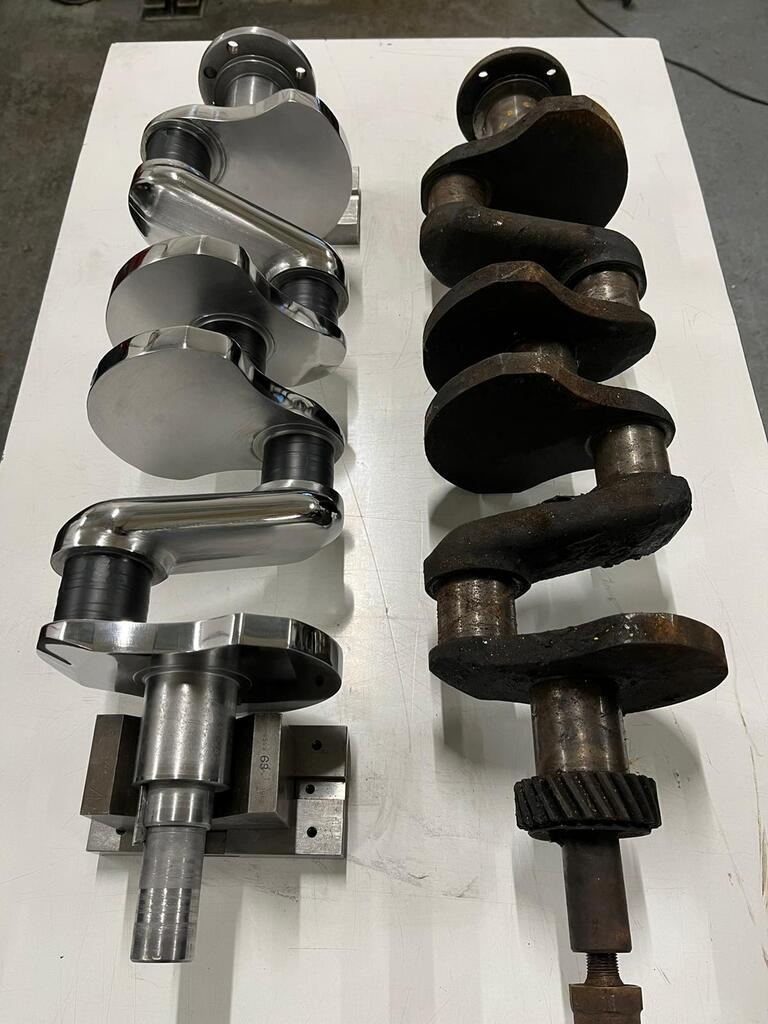 And blimey - billet stuff too. 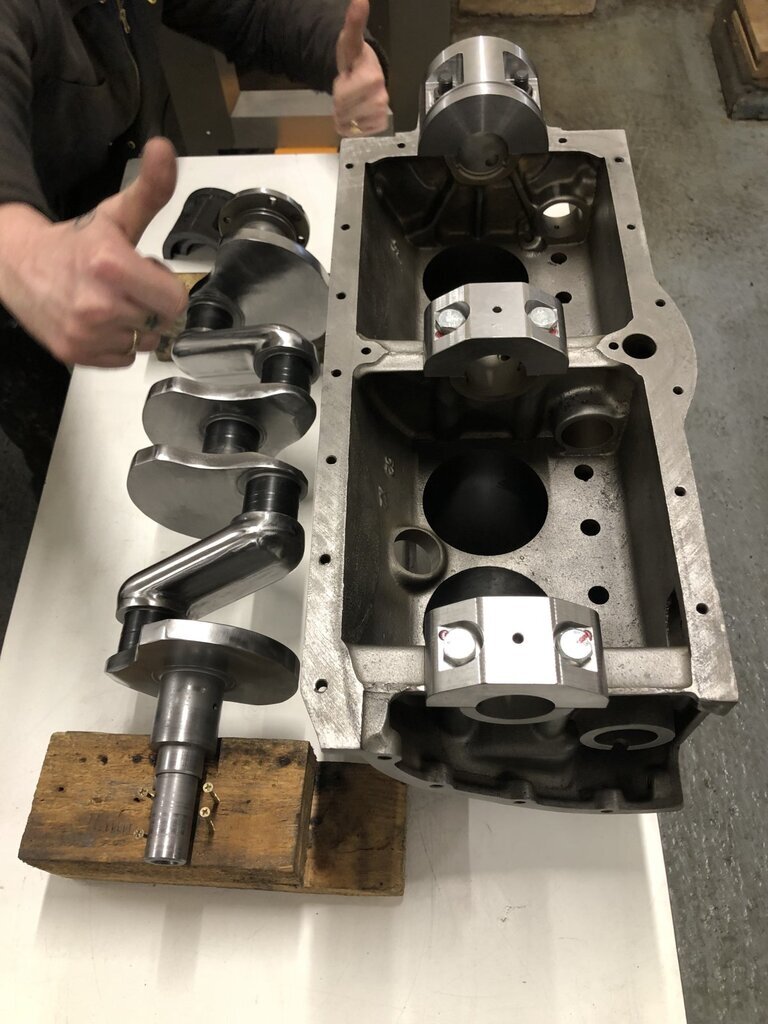 |
| |
|
|
andyborris
Posted a lot
   Freedom is just another word for nothing left to lose.
Freedom is just another word for nothing left to lose.
Posts: 2,220
|
|
|
|
Whilst I understand the socio-economic factors that led to the rise of Hot Rods in the USA (thanks voodoo57), I think this picture really explains what a Hot Rod is about.  It's about winning. |
| |
|
|
braaap
Posted a lot
  
Posts: 2,751
Member is Online
|
|
|
|
Thank You very much to everybody adding to this lesson for me (and others) about the roots and the soul of hotrodding! So if hotrodding is about making a car faster, lighter or aerodynamicly more efficient, what are other modifications called that do not have these aims, but share a few mods? Mild rodding? What is this pickup truck? It has the fenders removed (unless cars were sold without fenders back in these days), it's not roof chopped, doesn't have wide wheels, no clue of juicier engine, the writing on the doors gives a clue that it might only be the work horse for Bruces' rod shop where he builds rods according to the given definition here, but I doubt that myself. 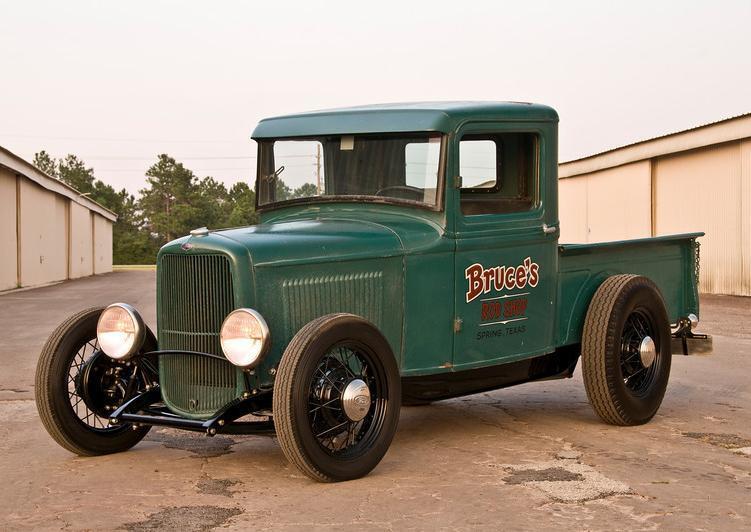 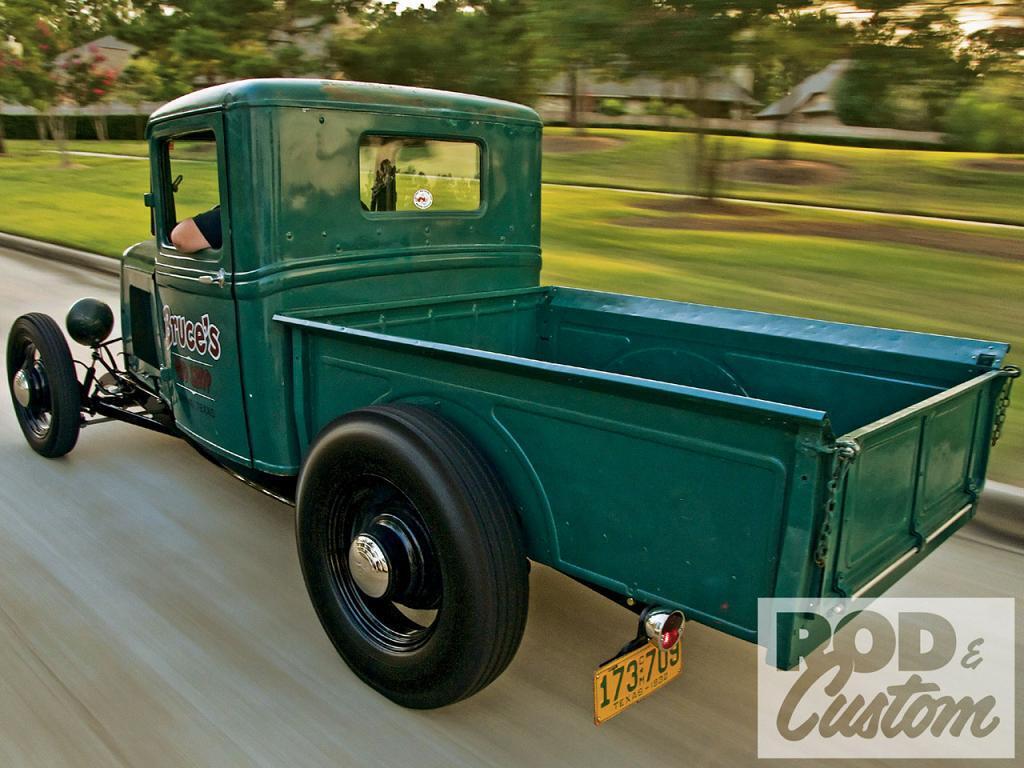 Is it still a hot rod, just not per definition? Is it "just" a hot rod inspired vintage, altered car? |
| |
|
|
|
|

















